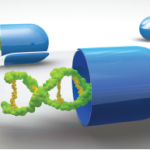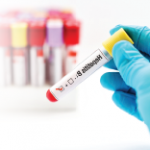
Wavebreak Media / OFFSET
Since it was first described, the spectrum of disease caused by deficiency of adenosine deaminase 2 (DADA2) has been broadening. Features described include systemic vascular and inflammatory features and recurrent stroke, which overlap with childhood-onset polyarteritis nodosa (PAN).
Previous data show that DADA2 has extensive genotypic and phenotypic variation.1 Results from a recently published study expand the description of DADA2 by identifying several distinct genotypes, as well as describing varying phenotypes and treatment approaches to each.2
“These results expand our knowledge of the phenotypic and genotypic variability of children with DADA2,” says Kimberly Morishita, MD, clinical assistant professor, Division of Rheumatology, Department of Pediatrics, University of British Columbia, Vancouver, Canada, a study author.
In particular, the study sheds light on the broad array of clinical symptoms that children with DADA2 may present with and that may suggest the need for screening.
“Screening for DADA2 in a broader spectrum of new and existing patients with suspected systemic vasculitis may enable earlier identification and improved management of these patients,” says Dr. Morishita.
Expanding Spectrum of DADA2
Using data from a childhood vasculitis database (the Pediatric Vasculitis Initiative or PedVas), investigators sequenced the coding regions of the ADA2 gene in 60 children and adolescents (aged 18 and younger) reported as having cutaneous PAN, unclassified vasculitis, systemic vasculitis with onset of symptoms prior to the 5th birthday or history of stroke. Only two children were clinically suspected of having DADA2.
The investigators identified nine children with DADA2: five with PAN, three with unclassified vasculitis and one with anti-neutrophil cytoplasmic antibody (ANCA) associated vasculitis.
Of the nine patients who had ADA2 deficiency, eight had biallelic rare variants in known coding regions of ADA2 (p.Gly47Arg and p.Gly47Ala) or in novel coding regions of ADA2 (p.Arg9Trp, p.Leu351Gln and p.Ala357Thr), and one had no identified variants in the gene’s exons, but complete deficiency of the protein was confirmed.

Dr. Morishita
When looking at the clinical phenotypes associated with the eight patients with rare or novel ADA2 variants, the investigators describe a wide variation, with age of symptom onset ranging from one week to 16 years, a range of cutaneous involvement in eight patients (e.g., livedo reticularis/racemosa, nodular lesions, soft tissue/subcutaneous edema and ulcers) and neurological involvement in eight patients (e.g., stroke and diffuse cerebral atrophy in six and peripheral nervous system involvement in four).
Other findings included low immunoglobulin M (IgM) levels in four patients, despite normal IgA and IgG levels, and blurred vision without other diagnoses of ocular inflammation in four patients. Only patients with PAN who were later diagnosed with DADA2 had the symptom of blurred vision, the other PAN patients did not. All patients were negative for anti-nuclear antibodies.
Given the wide variation in phenotypes, including older age in patients classified with PAN and range of systemic inflammatory features, the investigators suggest the differential diagnosis for DADA2 include patients of all ages with PAN, as well as patients with symptoms outside PAN.
Kathleen M. O’Neil, MD, professor of clinical pediatrics, Division of Pediatric Rheumatology, Indiana University School of Medicine, Indianapolis, says, “DADA2 should be considered in the differential diagnosis of patients of all ages with otherwise idiopathic polyarteritis nodosa and others outside the PAN phenotype. DADA2 should be considered in unexplained early childhood CNS [central nervous system] disease including, but not exclusively, stroke with systemic inflammatory features, even without a classic vasculitic rash.”



